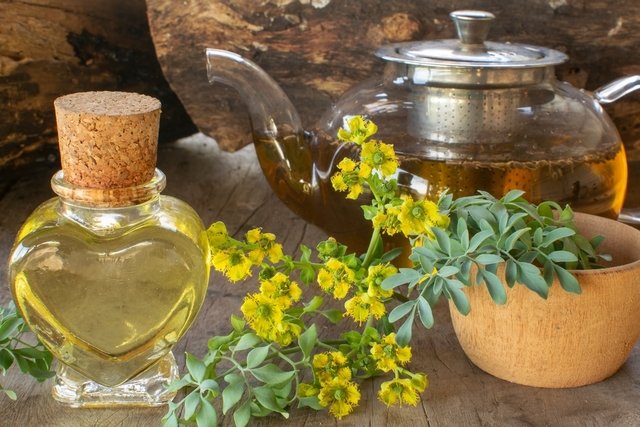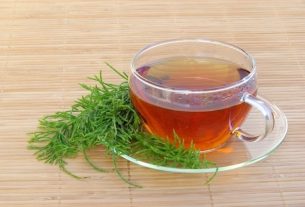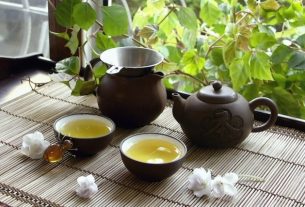The rue (Ruta graveolens) is a medicinal plant with anti-inflammatory, vermifuge and analgesic properties, which helps in the treatment of varicose veins, worms, conjunctivitis, toothache and headache.
This plant is rich in bioactive compounds such as rutin, arborinin and graveolin, which give it its medicinal properties. Rue can also be used, in some cases, to regulate menstruation.
Rue can be found in the form of dried or fresh flowers and leaves, in natural product stores or fairs, and is used to prepare teas, tinctures or poultices.

What is rue used for?
Rue is normally indicated for:
1. Regulate menstruation
Because it has an emmenagogue action, rue helps treat menstrual changes, such as amenorrhea or excessive bleeding, regulating menstruation.
Furthermore, rue also has analgesic action, helping to relieve menstrual cramps. Check out other home remedies for menstrual cramps.
2. Fight worms
Rue has anthelmintic properties and is therefore popularly used to help fight worms, such as ascaris and pinworms. See other homemade options to combat pinworms.
3. Treat varicose veins
Rue contains rutin, a flavonoid that improves blood circulation and has anti-inflammatory and vasoprotective effects. Therefore, this plant can help in the treatment of varicose veins.
4. Fight scabies and lice
Because it contains rutin and quercetin, which are bioactive compounds with repellent properties, rue helps fight lice.
Furthermore, rue also has a calming action and can be applied to the skin to relieve itching and irritation in cases of human scabies. See more home remedies for human scabies.
5. Helps in the treatment of conjunctivitis
As it has antimicrobial, antibacterial, anti-inflammatory and antifungal effects, rue can be used in eye washes, helping to treat conjunctivitis.
6. Relieve pain
Rue helps relieve rheumatic pain, headache, toothache, ear pain and stomach pain, because it contains myrcene and quercetin, which are bioactive compounds with analgesic and anti-inflammatory action.
7. Balance blood glucose levels
Because it has excellent amounts of flavonoids, rue improves insulin functions, helping to balance blood glucose levels. This happens because this plant has antioxidant action, protecting the pancreas cells responsible for producing the hormone insulin.
8. Reduce fluid retention
As it has a diuretic effect, due to the presence of quercetin, rue stimulates the elimination of excess body fluid through urine, reducing swelling and fluid retention.
9. Strengthen the immune system
Because it contains arborin and coumarin, rue has antihistamine and anti-inflammatory activity, helping to strengthen the immune system.
Furthermore, rue also contains rutin, which is a bioactive compound that facilitates the absorption of vitamin C by the body, a vitamin that improves the functions of defense cells, helping to fight microorganisms such as viruses, bacteria and fungi.
How to use rue
Rue is mainly used in the form of tea, which can be prepared with flowers, fresh or dried leaves, and can be ingested or applied to washes on the eyes, skin or hair.
Rue can also be used in the form of a poultice, which can be made by placing 2 tablespoons of fresh rue leaves in a bowl, kneading well until it forms a paste and applying directly to the affected area to treat rheumatic pain, varicose veins or wounds, for example.
Furthermore, rue can also be consumed in the form of a tincture, which can be ingested or applied to the skin in cases of scabies and psoriasis. See how to make the dye.
How to make rue tea
All parts of the plant can be used, however to make tea it is usually recommended to use rue leaves, as this is where it contains most of its properties.
Ingredients:
- 1 teaspoon (2 to 3 g) of dried rue leaves;
- 1 L of water.
Preparation mode:
In a pan, boil the water and then turn off the heat. Add the rue leaves, cover the pan and let it rest for 5 minutes. Strain and drink then. It is recommended to drink up to 1 cup of this tea per day.
Possible side effects
Ingestion of large quantities of rue can cause poisoning, tremors, convulsions, hemorrhage, vomiting, cramps, diarrhea, decreased heart rate, pupil contraction and sleep.
Additionally, when applied to the skin and exposed to sunlight, rue can also cause contact dermatitis or burns.
Therefore, consumption of rue should only be done with the advice of a doctor or other health professional specialized in the use of medicinal plants.
Contraindications
Because it is an abortifacient, rue is contraindicated for pregnant women. In the same way, rue should not be consumed by women who are breastfeeding, people with kidney disease and children.
People who use medications to control high blood pressure, digoxin or dobutamine, should only use rue under the guidance of a doctor, as this plant can alter the effect of these medications.

Sign up for our newsletter and stay up to date with exclusive news
that can transform your routine!
Warning: Undefined array key "title" in /home/storelat/public_html/wp-content/plugins/link-whisper-premium/templates/frontend/related-posts.php on line 12
Warning: Undefined array key "title_tag" in /home/storelat/public_html/wp-content/plugins/link-whisper-premium/templates/frontend/related-posts.php on line 13



